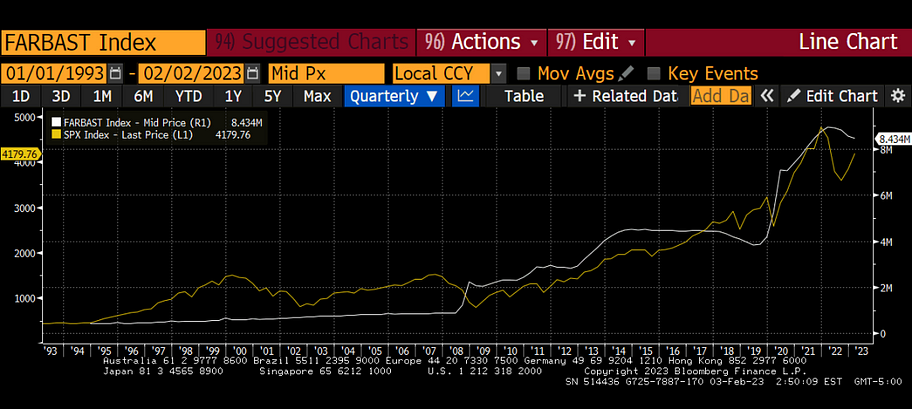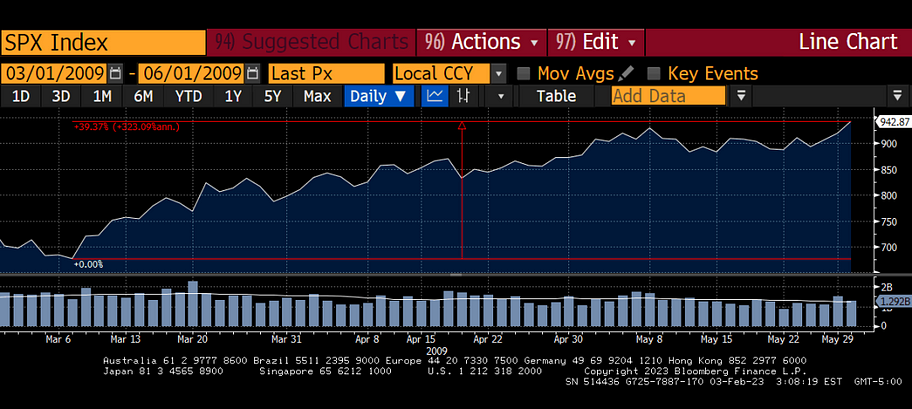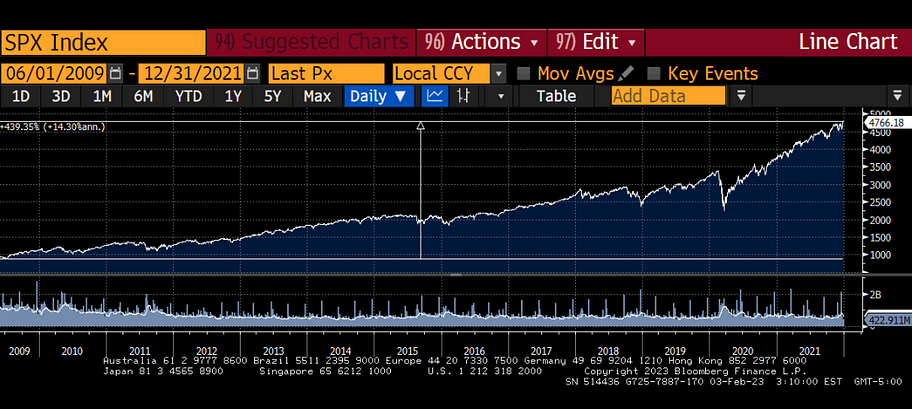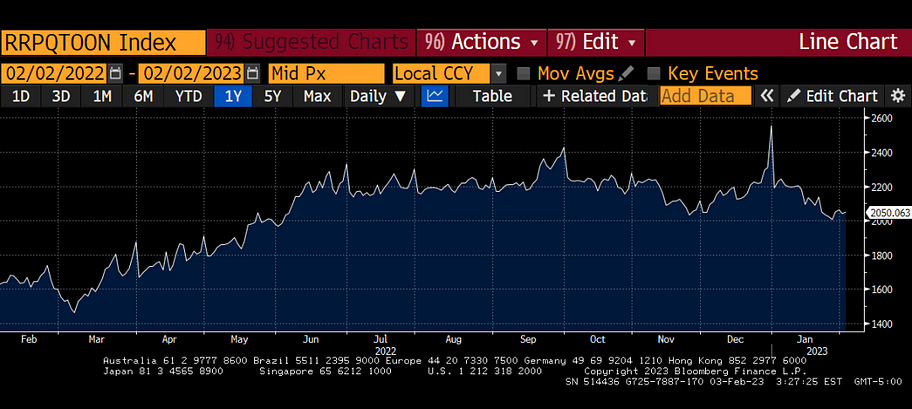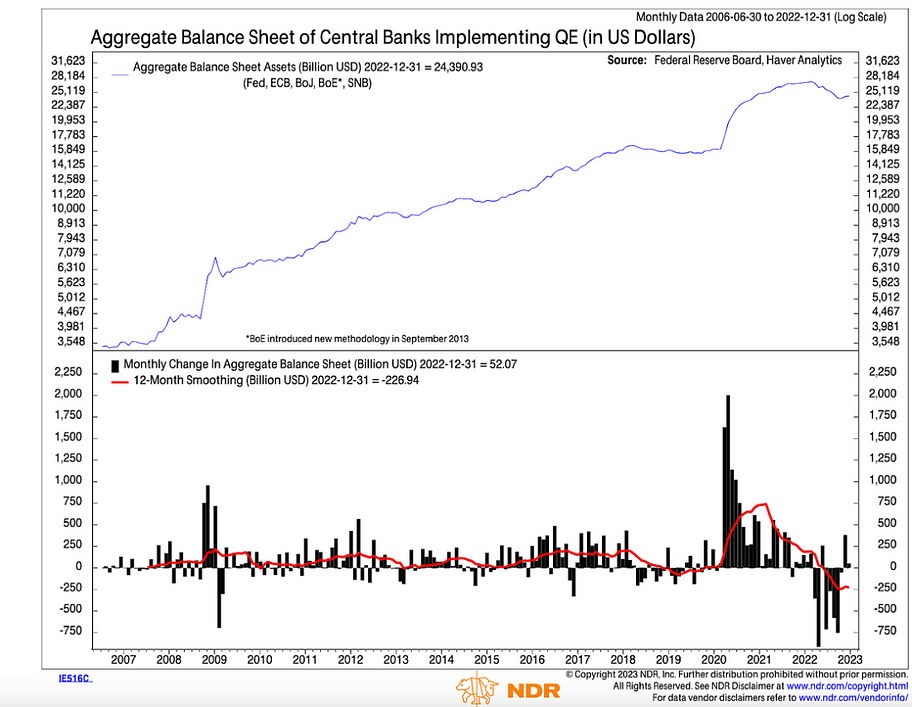Arthur Hayes: After missing the rebound, I decided to enter the market
Original link: https://cryptohayes.medium.com/be-present-aff45d6421b4
Compiled by: Ehan, Wu Talk Blockchain
Be Present
We modern people engage in many activities, living more in the present. In a global society addicted to endless internet-connected devices, having a clear mind and inner peace becomes extremely important.
One way I keep my mind clear and live in the moment is through skiing. As long-time readers know, I am an avid skier. In a dense forest, with a steep slope and a few feet of fresh snow piled up, I find myself in paradise. Although this setting brings me pure joy, it is not without risks.
Skiing quickly through the trees requires 100% attention. If your focus slips even slightly, you might find yourself playing the ancient game of man versus tree. At my speed, the trees always win --- --- crashing into my backside is the best outcome.
Last week, during a snowcat ski trip, I learned a lesson. "Cat" on the ski slope refers to a snowcat, which means riding a snowcat up the mountain. The resort I was at could only be accessed by a snowcat. This resort features a snow bowl called E Bowl. After reaching the top of the bowl, you move for 5 to 10 minutes before dropping into deep snow. I chose my line, committed, and loved life.
The ravines in the bowl were filled with wind-blown rolls, and jumping down was fun. As I skied to meet the other members of my team, I shifted my focus from the current skiing task to thoughts of the cold beer and burger I would have for lunch. As I approached what I thought was a regular soft powder pile, I looked down and saw dirt. It was a crack in the snow. I quickly jumped up and then pushed my skis and legs forward like a long jumper to grab the other side of the crack.
Bang… I awkwardly crashed into the snow pile on the other side, rolling on my skis with my momentum. I almost fell into the crack. If I had fallen into the crack, I could have broken my skis, possibly sprained my knee, and at best, that would end my day; at worst, it would end my season. All of this happened because I didn’t keep 100% of my attention on the current skiing task.
I made a similar mistake in my recent financial market predictions.
You Can Sell
In my previous article "Inflatable Castle", I outlined my views on the scenario where the Federal Reserve might pivot. I worry that the Fed will pivot due to market dysfunction. If the Fed really decides to press the "money printer" button, then before taking this action, all risk asset prices (including cryptocurrencies) will experience an unpleasant adjustment.
I am concerned that this potential outcome is likely to occur later in 2023, which is why I have moved idle funds into money market funds and short-term U.S. Treasury bills. Therefore, the portion of liquidity I intended to eventually use to buy cryptocurrencies missed the massive rebound we are currently seeing from the lows. Bitcoin has rebounded nearly 50% from the $16,000 low we saw during the FTX incident. This rebound did not happen in a vacuum, as various high-risk assets are also rising.
One day last week, while relaxing on the chairlift, I chatted with a hedge fund brother who wants to be a K-pop star. I asked him what he thought of the Fed's recent meetings and policy decisions. He thought they were super dovish and revealed that he was fully invested in the market. Last December, he decided to exit short-term Treasuries and go long on stocks.
I asked him if he was worried about the potential impact of quantitative tightening (or "QT" --- --- which means the Fed is reducing the money supply by $100 billion each month and shrinking its balance sheet). It is well known that risk markets move in sync with the central bank's (especially the Fed's) balance sheet.
Federal Reserve Balance Sheet (white) vs. S&P 500 Index (yellow)
He said he wasn’t worried because he believed that the U.S. government hitting the debt ceiling would lead to a reduction in the Treasury General Account (TGA). TL;DR: The U.S. Treasury has about $500 billion in the TGA (i.e., its checking account). The Treasury can roll over maturing debt but cannot issue new debt --- --- which would increase the total balance of U.S. Treasury bills, notes, and bonds. Therefore, if the Treasury wants to generate new spending, it must dip into its own pockets. This means the Treasury could inject the entire $500 billion from the TGA into the U.S. economy, increasing liquidity in the system and pushing up risk asset prices.
I countered that the depletion of the TGA would be temporary. At some point in the summer, the Treasury would run out of all TGA funds, Congress would vote to raise the debt ceiling, and the Treasury would reintroduce a large amount of debt to the market. At that time, the Fed would continue to reduce its balance sheet through QT, keeping the liquidity faucet turned off and offsetting any potential upside in the market that might come from pausing interest rate hikes.
His response was to the point. He believed this was a future problem he could sell at any time. But right now --- --- I completely agreed with his view --- --- the liquidity situation of the dollar and global central banks is favorable for risk assets. Therefore, he stated that he planned to live in the moment and ride this potential wave of short-term loose monetary policy.
I carefully considered what he said and emailed my banker to request that I start withdrawing funds from my money market fund and U.S. Treasury portfolio. Betting it all on Bitcoin, heading to the last port of Shitcoin City.
Is It Too Late?
Buying Bitcoin after it has already risen 50% from the lows is risky. Has the market already priced in all the easing policies expected in the coming months?
Do you remember in March 2009 when the Fed began purchasing bonds as part of its quantitative easing (QE) money printing operation?
The S&P 500 index rebounded 40% from its lows. For the most traded stock index globally, this massive volatility occurred in just three months. The market surged because it anticipated future easing policies. If you refused to participate after June 2009 because you thought everything was resolved… well, I feel sorry for your losses.
The S&P 500 index continued to rise 440% from June 2009 to December 2021. It continued to rebound because the Fed kept providing free money to the market (through quantitative easing).
Similarly, a part of my portfolio missed the early stages of Bitcoin's recent rebound --- which was also driven by expectations of upcoming monetary easing --- but that doesn’t mean I should stubbornly refuse to participate in the next part of the rebound, which is driven by inflows from reverse repurchase agreements and (as mentioned earlier) TGA spending. Let me explain.
My dollar liquidity index has three main components: the size of the Fed's balance sheet; the size of the TGA held by the Fed; and the size of the Fed's reverse repurchase (RRP) tool.
We know that the Fed's balance sheet will shrink by $100 billion each month, which is unfavorable for risk. But at the same time, due to the debt ceiling being hit, the Treasury will bring the TGA down to zero. The TGA is currently about $500 billion. This means that the downside of the Fed's QT over the next five months may be offset by TGA spending in the U.S. economy.
Before I reach the expected direction of the RRP, I need to first make an assumption about market sentiment: risk assets. At the recent Fed meeting, Powell acknowledged that inflationary pressures are easing, and based on the data, the Fed may continue to slow the pace of interest rate hikes or even pause them entirely. The pace of rate hike changes is slowing, which is a significant improvement in market sentiment towards risk assets compared to 2022. My assumption is that others --- --- like myself --- --- will withdraw funds from money market funds and go long on risk assets, leading to a reduction in RRP balances. When RRP balances decrease, it increases liquidity in the system, which is favorable for risk assets.
Money market funds constitute the majority of participants in the RRP program, as they provide a risk-free way to earn returns. Its risk is even lower than holding short-term Treasuries. This is because the Fed pays interest on the RRP balances daily, while short-term Treasury bills are zero-coupon fixed-income instruments --- --- and the risk of the U.S. government defaulting is always present. Moreover, given that the yield difference between the two options is not significant, the general sentiment is "Why take on more risk than you need to?" Therefore, money market funds flood into the RRP --- --- when people like me withdraw funds from money market funds to invest in the asset market, it leads to a decrease in RRP balances, thereby increasing market liquidity and naturally pushing prices up.
Thus, the reduction of the TGA and the decrease in the Fed's balance sheet will hedge against each other, but as the Fed begins to slow the pace of interest rate hikes, market sentiment starts to become more optimistic, and RRP balances will shrink --- --- all else being equal, this is positive for marginal risk. Currently, there is slightly more than $2 trillion in RRP, and if we exclude the window dressing effect at the end of 2021, it has decreased by about $200 billion so far this year.
The Party Begins
What have other major central banks been doing in terms of money printing? The chart below from NDR Research indicates that after a dismal 2022, central bank governors are returning to normal business --- --- that is, printing money by expanding their balance sheets.
I am writing an article about how the Bank of Japan (BOJ) is taking money printing to a new level. But for now, what you need to know is that the Japanese central bank seems determined to ensure that hyperinflation takes root in the land of the rising sun.
As this shift occurs globally, all signs point to "Go Go Go!" --- --- but like everything in the universe, this is a temporary phenomenon.
A Terrible Future
The TGA will run out at some point in the middle of the year. After it is depleted, the U.S. will immediately stage a political circus around raising the debt ceiling. Given that if the U.S. government decides to forgo raising the debt ceiling and instead defaults on the assets that support the system, the Western-dominated fiat financial system would collapse overnight, it is safe to assume that the debt ceiling will be raised. And once the debt ceiling is raised, the U.S. Treasury will have some work to do.
The Congressional Budget Office (CBO) estimates that the U.S. federal deficit will be between $1.1 trillion and $1.2 trillion in 2023. The U.S. Treasury must issue bonds to cover the deficit. Given that it cannot do so in the first half of this year, it means that it must sell a massive amount of debt for the 2023 fiscal year in half the time.
While the Treasury is busy selling bonds, the Fed's current policy is to continue reducing its holdings of U.S. Treasuries by $100 billion each month. This is a double trouble for risk assets. This would mean a significant amount of liquidity is being withdrawn from the market. So the question becomes --- --- if inflation, the U.S. labor market, and the overall U.S. economy weaken in the second half of 2023, will the Fed pause interest rate hikes (or even cut rates) while continuing to tighten the monetary environment through QT?
I asked Danielle DiMartino Booth (DDM) and the team at Quill Intelligence what they think Powell would do in this situation. DDM is a former Fed staffer who is very familiar with the Fed's view of the market. She told me she believes Powell would actually cut rates while continuing QT. If that happens, then what would have a greater impact on dollar liquidity becomes a bit unclear --- --- the price of money (which would decrease due to the slowing of rate hikes, making liquidity positive) or the quantity of money (which would decrease due to the Fed's balance sheet reduction, making liquidity negative). I belong to the camp that believes the quantity of money is more important, but we won't know for sure until Powell actually initiates this plan.
I also asked my macro dad Felix Zulauf the same question. He acknowledged that financial conditions are loosening and will continue to loosen due to the TGA reduction. In his view, if Powell is indeed a follower of Paul Volcker and wants to continue tightening financial conditions, he should accelerate QT to offset the decline in TGA and RRP. However, he has not changed the pace of the Fed's QT and has not indicated any changes in the pace of QT. (However, if Powell decides to ease financial conditions and accelerate QT at the next Fed meeting, my optimism would evaporate.)
In any case, with the Treasury flooding the market with a massive amount of debt and the Fed talking out of both sides of its mouth, I would say this future is negative for risk assets. This means that if you plan to buy risk assets now, you need to be prepared to closely monitor the market and be ready to hit the sell button immediately when the TGA is completely depleted but before the debt ceiling is raised.
Next Steps
- Think Correctly
I can't always wait for the perfect setup. It's time to get in.
- Raise Cash
I will transfer the portion of liquid fiat currency I am willing to risk from money market funds/short-term U.S. Treasury bills into cash, which I can quickly deploy into risk assets of my choice.
- Buy Bitcoin
I will deploy in the coming days. I hope the size of my investment really matters, but it doesn't --- --- so please don't think that when this happens, it will have any noticeable impact on Bitcoin's price.
- Shitcoining Together
I believe there is currently a narrative that is inspiring a lot of messy garbage projects to launch. Once I do more research on the shitcoin space, I will update you --- --- but if Bitcoin and Ethereum continue to rise, there will definitely be a shitcoin vertical market going crazy in the coming months.
The key to shitcoining is understanding their volatility in the waves. First comes the rebound of the cryptocurrency reserve assets --- --- namely Bitcoin and Ethereum. The rally of these mainstays eventually stalls, followed by a slight price drop. Meanwhile, the garbage coin complex stages an aggressive rebound. Then the shitcoin trend goes to zero, and interest returns to Bitcoin and Ethereum. This stair-step process continues until the long-term bull market ends.
- Relax
When the TGA reaches zero, exit the market. At that point, I must sell everything I have bought from now until then without asking any questions. I must avoid falling in love with a pile of shitcoins I own and instead be a cold, hard market operator.
Of course, there may be some global political events that trigger a flight to safety. I have thought of a few and am currently considering how much impact they would have on Bitcoin's price if they could withstand it. As I continue to ponder these issues, I look forward to a detailed article to convey my findings.
For now, I am very aware of the fact that nothing will go according to plan, and I must maintain a flexible mindset. We are all Bayesians now!



